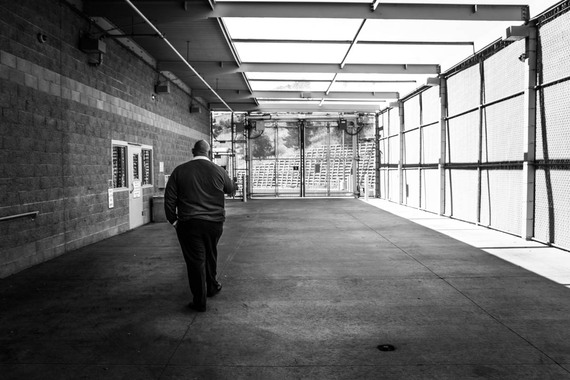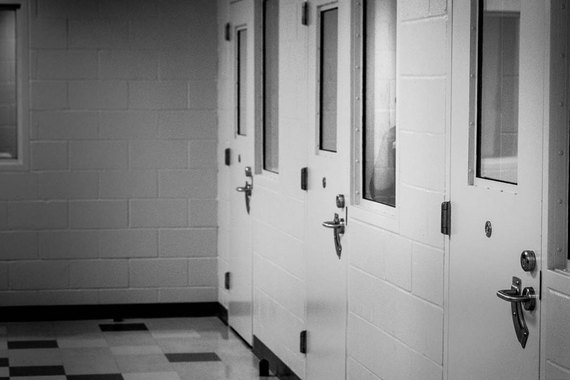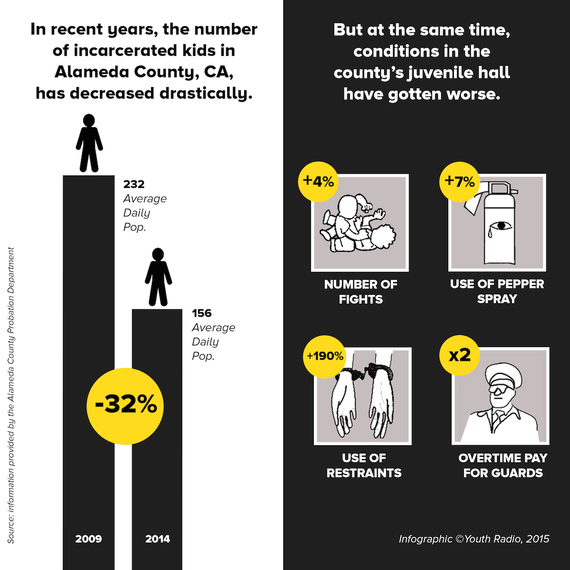By: Brett Myers
Reported over four months, Unlocked is a three-part investigation into alternatives to juvenile incarceration-both model programs and cases that raise serious concerns. From Alameda County in San Francisco's East Bay, to Wayne County, Michigan, Youth Radio reveals how moves away from juvenile incarceration are affecting youth and the system.
_____________________________________________________________
In 2007, Alameda County, California, built a new Juvenile Justice Center, a $176 million complex of courtrooms, law offices, and a huge, 360-bed incarceration facility -- juvenile hall. This May, I visited the hall, where Superintendent Christian Muñoz showed me around. He told me he'd been having trouble keeping the facility staffed.
"We survive on overtime," he said. "It's that bad."
Across the country, there are efforts to close outdated and dangerous juvenile incarceration facilities. But even in places with so-called "model" juvenile halls, counties often struggle to meet the minimum standards. Alameda County's facility, based in San Leandro, receives generally high marks, but faces some major challenges.
The inmate headcount here is the lowest it's been in five years. Yet, overtime for guards is more than double what it was five years ago, according to public salary reports. Just minutes into showing me around, an announcement squawked across Muñoz's walkie talkie:
"If you're interested or available to work, please give me a call in the junior-seniors office."
The evening shift was starting in less than an hour and Muñoz was short six people. He told me this happens all the time. There are lots of reasons for the staffing shortage: guards retiring, moving over to the adult system, or filing for workers comp. Across the state, hiring into the juvenile system is a challenge. Background checks often eliminate candidates because of past criminal activity or even for having stains on their credit history.
"It's difficult to run a lemonade stand like that," Muñoz said.
"Any time you're talking about supervising human lives it's an enormous amount of responsibility," he said, "and a liability for us as well."
We kept moving throughout the facility, eventually pausing in the section called Unit One. It's two stories high with 15 cells on each level. From where we stood, I could hear the sound of running water from the showers nearby.
On this particular day, there were three guards are on duty -- two of them working the upper and lower decks, shuffling kids back and forth from their cells to the showers. The guards were also doing room checks, looking for contraband like food, cell phones or weapons.
Suddenly, a commotion broke out. A teen named Rudy had just returned to his cell to discover that the cookies and snacks he had stashed away had been confiscated. As punishment for having food in his cell, he had also been docked 15 minutes of rec time. He was upset -- yelling, and refusing to go back inside his cell.
A female voice rang out across the unit: "Rudy!" It was Bonnie Lacy, one of the guards working Unit One. "Wait a minute," she told another guard, "let me go get him."
She walked toward Rudy, making eye contact as she addressed him. "Fifteen minutes for me" she said, emphasizing the "me." It wasn't a command exactly -- her voice was flavored with warmth as well as firmness. The words had their desired effect on Rudy. He turned around, stepped into his cell, and closed the door.
Afterward, the superintendent and several guards told me they prefer to talk through conflicts like this with kids. But incidents can escalate quickly. According to county records obtained by Youth Radio -- guards at Alameda County's Juvenile Hall used pepper spray 147 times last year.
Ninety percent of state-run juvenile correctional agencies don't allow guards to carry pepper spray at all.
But here, with guards working an average of 30 hours of overtime per week, there has been an increase in the use of force on juvenile inmates -- like guards performing take-downs or handcuffing detainees. The department calls these acts "use of physical and mechanical restraints," and that number has nearly tripled in the last five years.
Understaffing is a big part of the issue. "You know you've got a couple of staff watching a number of kids, and things happen," said Ray Colón, a Supervisor at Alameda County's Juvenile Hall who has been working there for 25 years.
During waking hours, the state mandates a minimum of one guard for every ten kids in detention. But Colón added:
"The kids don't always get the services they should get, because we're running short," he said. "They spend more time in their room, which is unfortunate, but it's the reality of not having the staff to complete the duties we need to do."
When they're short on guards, supervisors sometimes run what they call split recs -- basically dividing recreation, exercise, and dinner time in half. Fifteen kids come out while the other 15 remain in their cells.
18-year-old Malik spent more than four months incarcerated in Alameda County Juvenile Hall. He says when young people are locked in their cells with the rec time they expect, tensions flare.
"Man, more fights more attitudes," he said. "Kicking and banging. You know it's just angry. They want to be out of their rooms. That's why I used to kick and bang. If I know that I have a guaranteed hour of P.E. each day no matter what, I'm going to be angry if I can't get that."
While conditions for both the inmates and the guards have gone down, the costs have not. On average, there are only about 150 kids at Alameda County Juvenile Hall at any given time.
It costs 48 million dollars a year to detain them.
Youth Radio/Youth Media International (YMI) is youth-driven converged media production company that delivers the best youth news, culture and undiscovered talent to a cross section of audiences. To read more youth news from around the globe and explore high-quality audio and video features, visit Youthradio.org.


